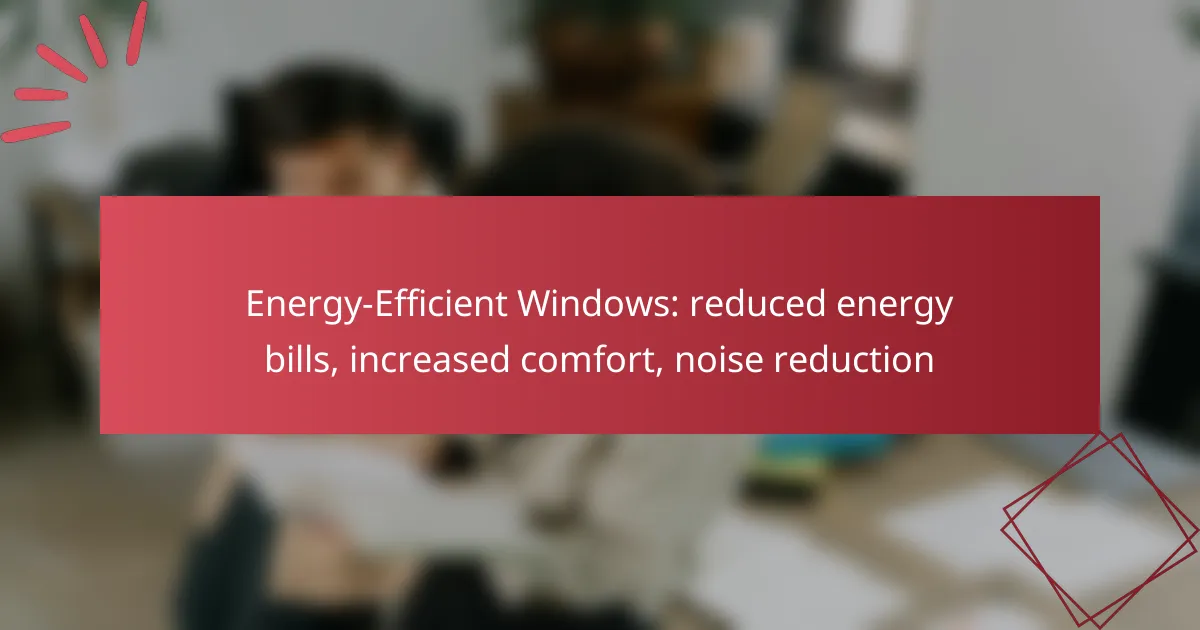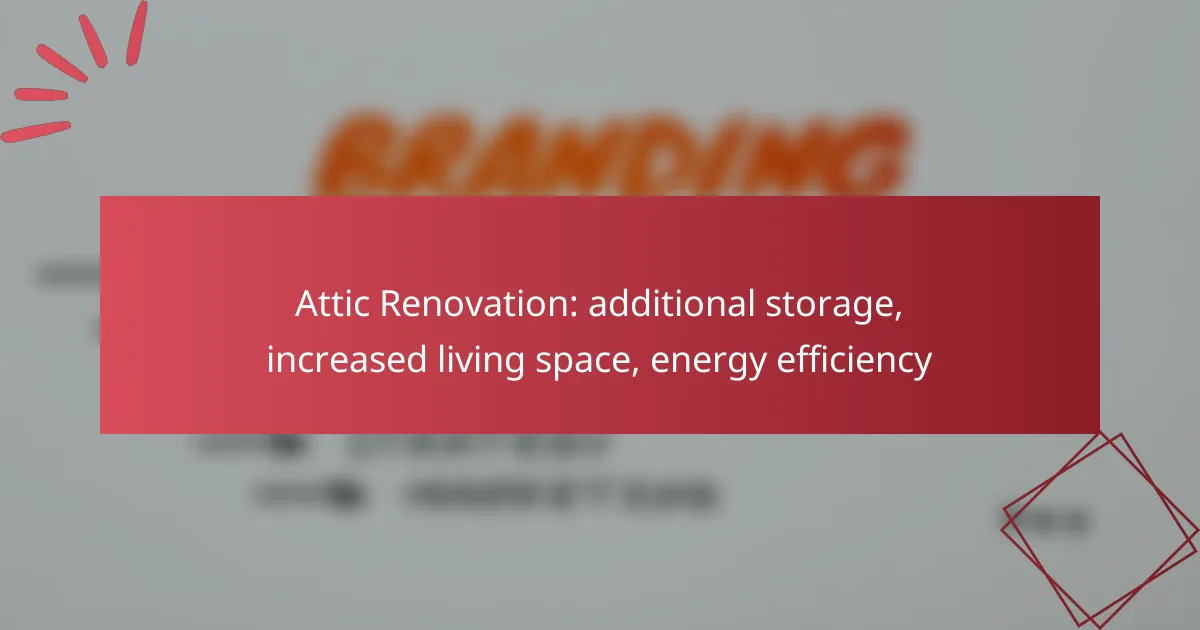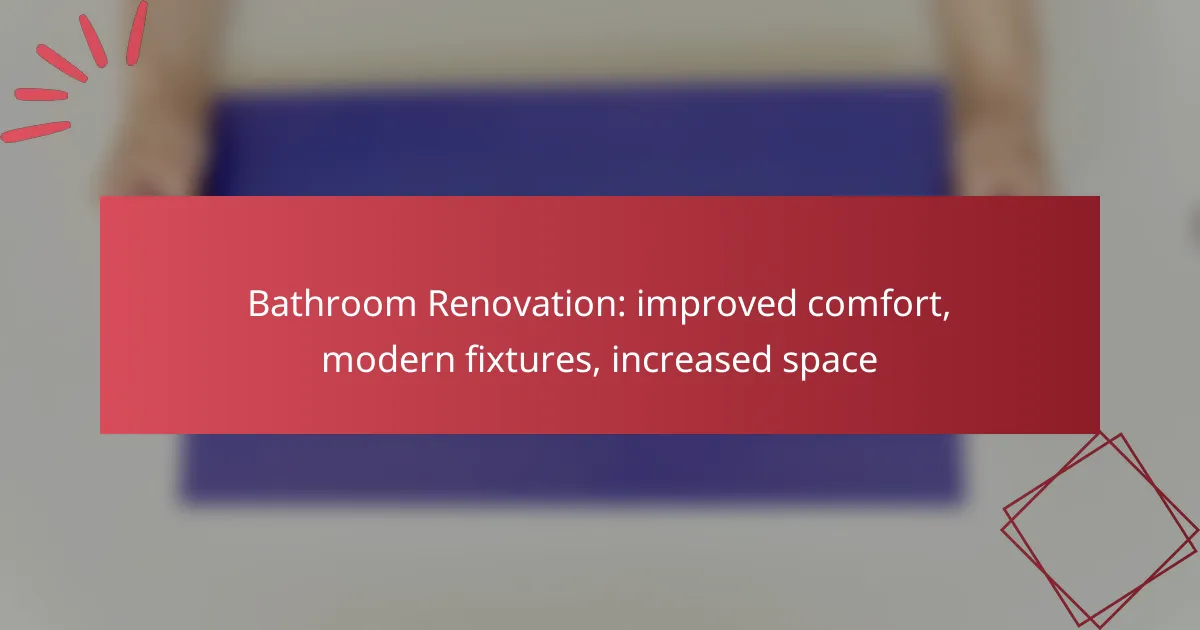Energy-efficient windows are a smart investment for homeowners, as they help lower energy bills by reducing heat transfer and maintaining a stable indoor temperature. In addition to cutting costs, these windows enhance comfort by minimizing drafts and improving air quality, while also effectively reducing noise pollution for a more tranquil living environment.

How do energy-efficient windows reduce energy bills?
Energy-efficient windows lower energy bills by minimizing heat transfer, which helps maintain a consistent indoor temperature. This efficiency reduces the workload on heating and cooling systems, leading to lower utility costs.
Lower heat loss
Energy-efficient windows are designed to significantly reduce heat loss during colder months. They typically feature multiple panes of glass, which create insulating air spaces that slow down heat transfer. This can lead to energy savings of around 10-25% on heating costs, depending on the climate and the quality of the windows.
To maximize heat retention, consider windows with low-emissivity (Low-E) coatings that reflect heat back into the room. Proper installation is crucial; even the best windows can underperform if not sealed correctly.
Improved insulation
Improved insulation in energy-efficient windows is achieved through advanced materials and construction techniques. These windows often use argon or krypton gas between panes to enhance thermal performance. This added insulation can help maintain comfortable indoor temperatures year-round, reducing reliance on HVAC systems.
When selecting windows, look for those with a high R-value, which indicates better insulation. A higher R-value means better energy efficiency, translating to lower energy bills over time.
Energy Star ratings
Energy Star ratings provide a reliable benchmark for assessing the energy efficiency of windows. Windows that meet Energy Star criteria are tested for their performance in various climate zones, ensuring they are suitable for specific regional conditions.
Choosing windows with Energy Star labels can lead to significant savings on energy bills, as they are designed to meet strict efficiency standards. Additionally, some regions offer rebates or tax incentives for installing Energy Star-rated products, further offsetting costs.
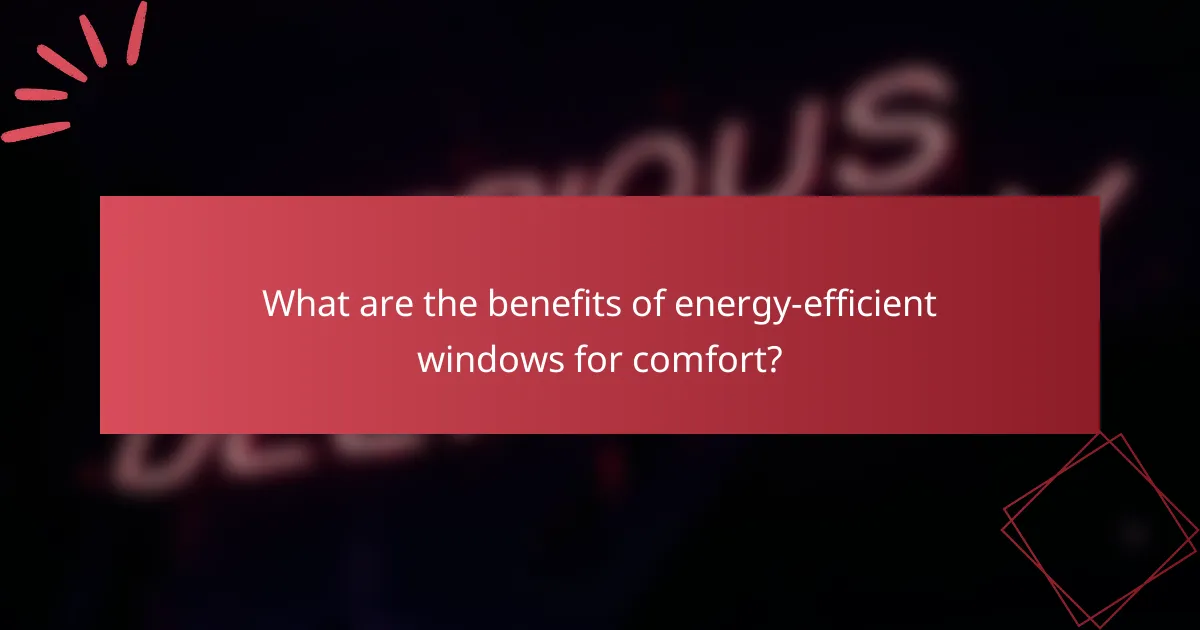
What are the benefits of energy-efficient windows for comfort?
Energy-efficient windows significantly enhance comfort by maintaining consistent indoor temperatures, minimizing drafts, and improving air quality. These windows are designed to reduce heat loss in winter and keep interiors cool in summer, leading to a more pleasant living environment.
Temperature regulation
Energy-efficient windows help regulate indoor temperatures by using advanced glazing technologies, such as low-emissivity (low-E) coatings and multiple panes of glass. These features reflect heat back into the room during colder months and block unwanted solar heat in warmer months. As a result, homeowners can expect a more stable temperature range, reducing reliance on heating and cooling systems.
For optimal performance, consider windows with a high energy rating, which indicates better insulation properties. In many regions, windows that meet ENERGY STAR standards can provide significant energy savings and comfort benefits.
Reduced drafts
Drafts can lead to uncomfortable temperature fluctuations and increased energy bills. Energy-efficient windows are designed to minimize air leakage through improved seals and frames. This tight construction prevents cold air from entering during winter and hot air during summer, creating a more comfortable indoor environment.
When selecting windows, look for options with weather stripping and insulated frames to further reduce drafts. Regular maintenance, such as checking seals and caulking, can also help maintain their effectiveness over time.
Enhanced indoor air quality
Energy-efficient windows contribute to enhanced indoor air quality by reducing the infiltration of outdoor pollutants and allergens. With better sealing, these windows limit the entry of dust, pollen, and other contaminants, promoting a healthier living space.
Additionally, improved insulation helps maintain humidity levels, preventing condensation that can lead to mold growth. Homeowners should consider pairing energy-efficient windows with proper ventilation systems to ensure a continuous flow of fresh air while maintaining energy efficiency.

How do energy-efficient windows contribute to noise reduction?
Energy-efficient windows significantly reduce noise pollution by utilizing advanced materials and construction techniques. These windows create a barrier that minimizes sound transmission, enhancing indoor comfort and tranquility.
Soundproofing features
Energy-efficient windows often incorporate soundproofing features such as laminated glass and specialized frame designs. Laminated glass consists of two or more layers of glass with an interlayer that absorbs sound waves, effectively reducing noise from outside.
Additionally, the window frame’s design can contribute to sound insulation. Frames that fit tightly and are made from materials with good acoustic properties help prevent sound leaks, further enhancing noise reduction.
Double or triple glazing
Double or triple glazing is a common feature in energy-efficient windows that significantly improves noise reduction. These windows consist of multiple panes of glass separated by air or gas-filled spaces, which act as insulators against sound.
The air or gas layer between the panes dampens sound vibrations, making it harder for noise to penetrate indoors. Generally, triple glazing offers better sound insulation than double glazing, but both options can effectively reduce noise levels by a noticeable margin.
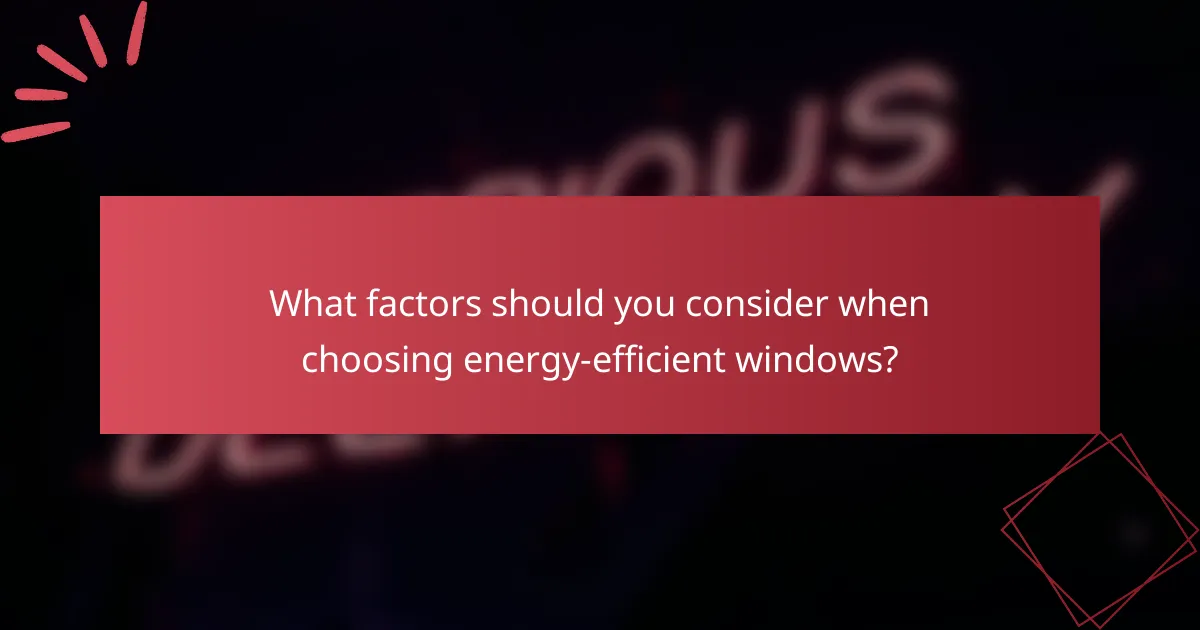
What factors should you consider when choosing energy-efficient windows?
When selecting energy-efficient windows, consider factors such as frame materials, glazing options, and your local climate. These elements significantly influence energy savings, comfort levels, and noise reduction in your home.
Window frame materials
The material of the window frame affects insulation, durability, and maintenance needs. Common options include vinyl, wood, aluminum, and fiberglass, each with distinct thermal properties. For example, vinyl frames typically offer good insulation at a lower cost, while wood frames provide excellent aesthetics but may require more upkeep.
When choosing a frame material, consider your budget and the long-term performance you expect. Look for frames with a low thermal conductivity rating to enhance energy efficiency.
Glazing options
Glazing refers to the type of glass used in windows, which can significantly impact energy efficiency. Double or triple glazing, where two or three panes of glass are sealed together, can reduce heat transfer and improve insulation. Low-emissivity (Low-E) coatings can further enhance performance by reflecting heat back into the room during winter and keeping it out during summer.
When selecting glazing, consider the U-factor and Solar Heat Gain Coefficient (SHGC) ratings. A lower U-factor indicates better insulation, while an appropriate SHGC can help manage solar heat based on your climate.
Local climate considerations
Your local climate plays a crucial role in determining the best energy-efficient windows for your home. In colder regions, windows with higher insulation values are essential, while warmer climates may benefit from windows that minimize solar heat gain. Understanding your area’s temperature ranges can guide your choices effectively.
Additionally, local building codes may dictate specific energy performance standards. It’s wise to consult with local experts or resources to ensure compliance and optimal performance for your specific environment.

What are the costs associated with energy-efficient windows?
The costs associated with energy-efficient windows include the initial investment, installation expenses, and long-term savings. Understanding these factors can help homeowners make informed decisions about upgrading their windows to improve energy efficiency.
Initial investment
The initial investment for energy-efficient windows typically ranges from a few hundred to several thousand dollars per window, depending on the materials and technology used. Options like double or triple glazing, low-emissivity (Low-E) coatings, and gas fills can increase upfront costs but enhance performance.
When considering the initial investment, it’s essential to evaluate the window’s energy rating and potential rebates or incentives available in your area, which can offset some costs. Look for windows that meet ENERGY STAR standards for optimal efficiency.
Long-term savings
Long-term savings from energy-efficient windows can be significant, often reducing energy bills by 10-25% annually. These windows help maintain indoor temperatures, leading to less reliance on heating and cooling systems.
In addition to energy savings, energy-efficient windows can increase the resale value of your home. Homebuyers often prioritize energy efficiency, making your property more attractive in the market.
Installation costs
Installation costs for energy-efficient windows can vary widely, generally falling between $100 and $300 per window, depending on the complexity of the installation and local labor rates. Hiring a qualified contractor is crucial to ensure proper installation, which maximizes the windows’ energy-saving potential.
Consider obtaining multiple quotes from contractors to find a competitive rate. Ensure that the installation includes proper sealing and insulation to prevent air leaks, which can undermine the benefits of your new windows.
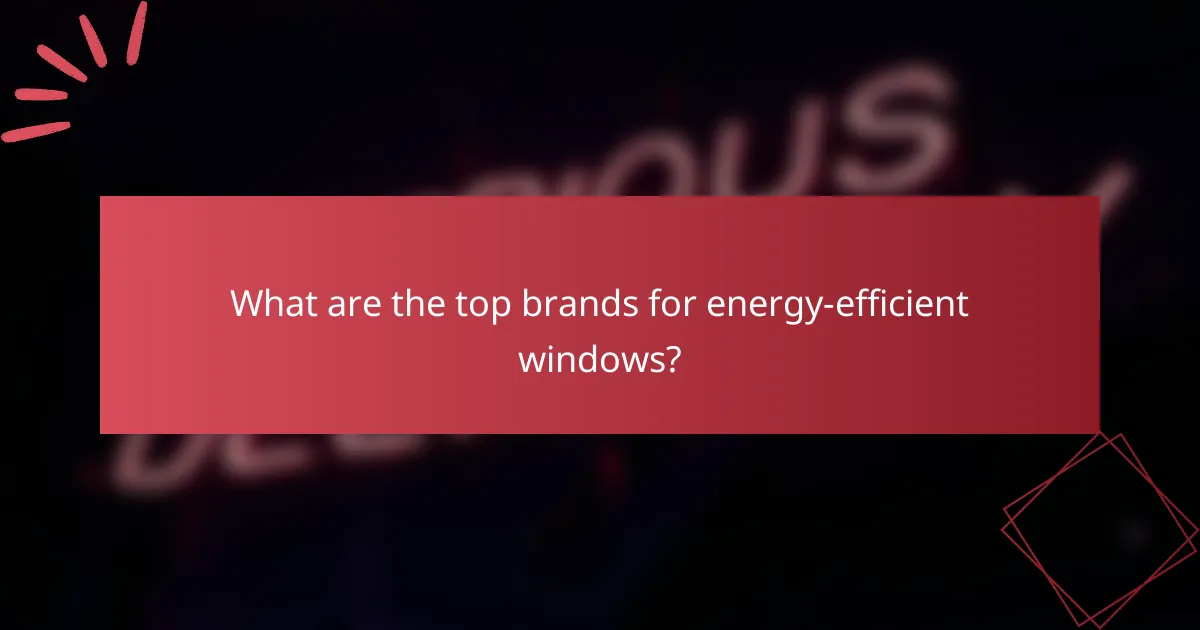
What are the top brands for energy-efficient windows?
Some of the leading brands for energy-efficient windows include Pella, Andersen, and Marvin. These companies are recognized for their innovative technologies that enhance insulation, reduce energy costs, and improve overall comfort in homes.
Pella Windows
Pella Windows offers a variety of energy-efficient options, including double and triple-pane glass that significantly reduces heat transfer. Their windows are designed to meet or exceed ENERGY STAR® standards, making them a popular choice for homeowners looking to lower energy bills.
Consider Pella’s range of materials, such as fiberglass and vinyl, which provide durability and insulation. Their windows also come with advanced coatings to minimize UV exposure, helping to protect your interiors from fading.
Andersen Windows
Andersen Windows is known for its high-quality, energy-efficient products that feature advanced glass technology. Their windows often include Low-E glass, which reflects heat while allowing natural light to enter, contributing to a comfortable indoor environment.
When choosing Andersen, look for their Fibrex® material, which combines the strength of wood with the low-maintenance features of vinyl. This material not only enhances energy efficiency but also offers a long lifespan, making it a worthwhile investment.
Marvin Windows
Marvin Windows focuses on custom solutions that prioritize energy efficiency and aesthetic appeal. Their Infinity line features fiberglass windows that provide excellent insulation and are resistant to warping and fading.
Marvin’s windows can be tailored to meet specific energy performance needs, including options for triple glazing and argon gas fills. This flexibility allows homeowners to optimize their energy savings while maintaining the desired look of their home.
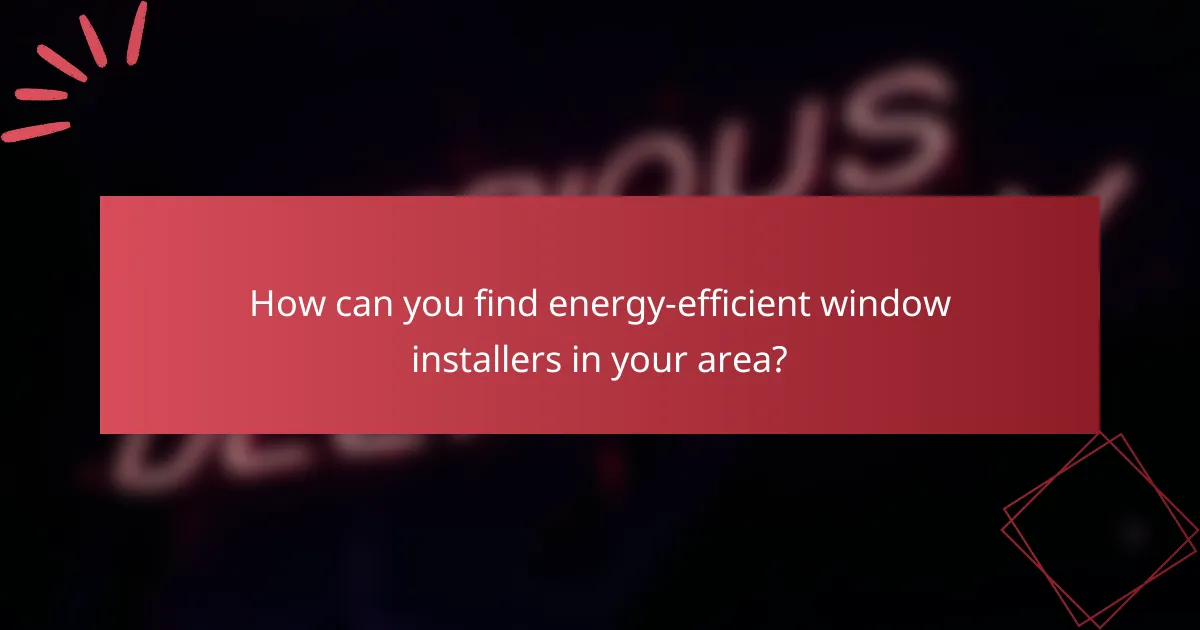
How can you find energy-efficient window installers in your area?
To find energy-efficient window installers in your area, start by researching local contractors who specialize in energy-efficient products. Check online reviews, ask for recommendations, and verify their certifications to ensure quality service.
Research local contractors
Begin your search by looking for window installers in your region who have experience with energy-efficient options. Use online platforms like Yelp, Angie’s List, or local directories to find contractors with good ratings. Pay attention to customer feedback regarding their installation practices and product quality.
Check for certifications
Verify that potential installers have relevant certifications, such as those from the National Fenestration Rating Council (NFRC) or Energy Star. These certifications indicate that the products they offer meet specific energy efficiency standards. Additionally, check if they are licensed and insured to protect yourself during the installation process.
Get multiple quotes
Request quotes from several contractors to compare prices and services. Ensure that each quote includes details about the types of windows, installation methods, and warranties offered. This will help you make an informed decision based on both cost and quality.
Ask about energy-efficient options
Inquire about the types of energy-efficient windows available, such as double or triple-pane glass, low-E coatings, and gas fills. These features can significantly reduce energy bills and improve comfort by minimizing heat transfer. Discuss the potential savings on energy costs to better understand the return on your investment.
Read reviews and testimonials
Look for reviews and testimonials from previous customers to gauge the reliability and quality of the installers. Websites, social media, and local community boards can provide insights into the experiences of others. Positive feedback can indicate a trustworthy contractor who delivers satisfactory results.
